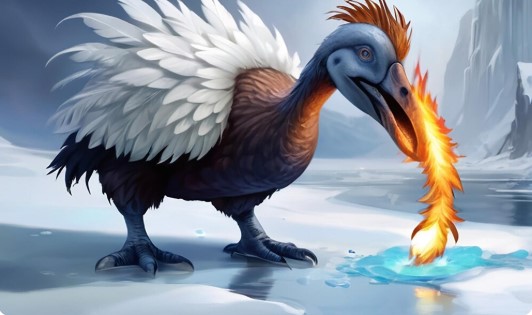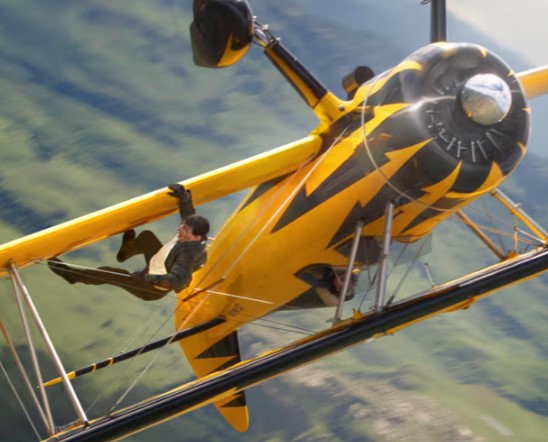Discover the Hidden History of Birds in the Era of Dinosaurs

Ancient Arctic Secrets: Birds and Dinosaurs Together
In the Arctic, millions of birds congregate to raise their young during the spring, bringing with them a multitude of peeps and downy hatchlings.
According to a study that appeared on the cover of this week's issue of the magazine Science, the same was true 73 million years ago. The oldest known instance of birds breeding in arctic regions is documented in the paper.
"Birds have existed for 150 million years," stated lead author Lauren Wilson, a Princeton University PhD candidate who attended the University of Alaska Fairbanks for her master's degree. "For half of the time they have existed, they have been nesting in the Arctic."
According to a study that appeared on the cover of this week's issue of the magazine Science, the same was true 73 million years ago. The oldest known instance of birds breeding in arctic regions is documented in the paper.
"Birds have existed for 150 million years," stated lead author Lauren Wilson, a Princeton University PhD candidate who attended the University of Alaska Fairbanks for her master's degree. "For half of the time they have existed, they have been nesting in the Arctic."
Did you know? You can comment on this post! Just scroll down
Wilson's master's thesis research at UAF produced the paper. She and her colleagues used dozens of small fossilized bones and teeth from an excavation site in Alaska to identify several kinds of birds that were breeding in the Arctic during the time dinosaurs roamed the same areas. These birds included gull-like birds, diving birds that resembled loons, and several types of birds that resembled modern ducks and geese.
The earliest evidence of birds reproducing in the Arctic or Antarctic before this study dates back to 47 million years, long after an asteroid wiped out 75% of the planet's animal population.
The earliest evidence of birds reproducing in the Arctic or Antarctic before this study dates back to 47 million years, long after an asteroid wiped out 75% of the planet's animal population.
Pat Druckenmiller, the senior author of the publication, the director of the University of Alaska Museum of the North, and Wilson's advisor for her master's degree work, stated, "This pushes back the record of birds breeding in the polar regions by 25 to 30 million years." The fossilized birds are in the museum's holdings.
"The Arctic is considered the nursery for modern birds," he stated. "It's kind of cool when you go to Creamer's Field [a Fairbanks-area stopover for migrating geese, ducks and cranes], to know that they have been doing this for 73 million years."
Wilson noted that considering how fragile bird bones are, the existence of the significant collection of prehistoric bird fossils is astounding.
"The Arctic is considered the nursery for modern birds," he stated. "It's kind of cool when you go to Creamer's Field [a Fairbanks-area stopover for migrating geese, ducks and cranes], to know that they have been doing this for 73 million years."
Wilson noted that considering how fragile bird bones are, the existence of the significant collection of prehistoric bird fossils is astounding.
This is especially true for the porous and readily damaged bones of baby birds.
"Finding bird bones from the Cretaceous is already a very rare thing," she stated. "It is practically unheard of to find newborn bird bones. These fossils are important because of this.
The Prince Creek Formation, which is noted for its dinosaur fossils, is located along the Colville River on Alaska's North Slope. Over fifty bird bones and bone fragments were identified by scientists.
"We put Alaska on the map for fossil birds," Druckenmiller stated. "It wasn't on anyone's radar."
"Finding bird bones from the Cretaceous is already a very rare thing," she stated. "It is practically unheard of to find newborn bird bones. These fossils are important because of this.
The Prince Creek Formation, which is noted for its dinosaur fossils, is located along the Colville River on Alaska's North Slope. Over fifty bird bones and bone fragments were identified by scientists.
"We put Alaska on the map for fossil birds," Druckenmiller stated. "It wasn't on anyone's radar."
The collection is a testament to the value of an uncommon excavation and research approach at the Prince Creek Formation. Much of vertebrate paleontology focuses on recovering large bones.
The scientists who work in the Prince Creek Formation make sure to get every bone and tooth they can, from the visible to the microscopic, Druckenmiller said. The technique, which involves hauling tubs of screened sediment back to the lab for examination under a microscope, has yielded numerous new species and unprecedented insights into the behavior and physiology of the dinosaurs, birds and mammals that lived in the Arctic during the Cretaceous Period.
"We are now one of the best places in the nation for bird fossils from the age of the dinosaurs," Druckenmiller said. "In terms of information content, these little bones and teeth are fascinating and provide an incredible depth of understanding of the animals of this time."
It remains to be seen whether the bones found on the Colville River are the earliest-known members of Neornithes, the group that includes all modern birds. Some of the new bones have skeletal features only found in this group. And, like modern birds, some of these birds had no true teeth.
"If they are part of the modern bird group, they would be the oldest such fossils ever found," Druckenmiller said. Currently, the oldest such fossils are from about 69 million years ago. "But it would take us finding a partial or full skeleton to say for sure."
Other collaborators on the paper include Daniel Ksepka from the Bruce Museum, John Wilson from Princeton University, Jacob Gardner from the University of Reading, Gregory Erickson from Florida State University, Donald Brinkman and Caleb Brown from the Royal Tyrrell Museum of Palaeontology and the University of Alberta (Brown is also affiliated with the University of Manitoba), Jaelyn Eberle from the University of Colorado Boulder and Chris Organ from Montana State University.
Article Posted 50 Minutes ago. You can post your own articles and it will be published for free.
No Registration is required! But we review before publishing! Click here to get started
One Favour Please! Subscribe To Our YouTube Channel!
468k
Cook Amazing Nigerian Dishes, Follow Adorable Kitchen YouTube Channel!
1.1m
Like us on Facebook, Follow on Twitter
React and Comment
Click Here To Hide More Posts Like This
Watch and Download Free Mobile Movies, Read entertainment news and reports, Download music and Upload your own For FREE.
Submit Your Content to be published for you FREE! We thrive on user-submitted content!
But we moderate!
















